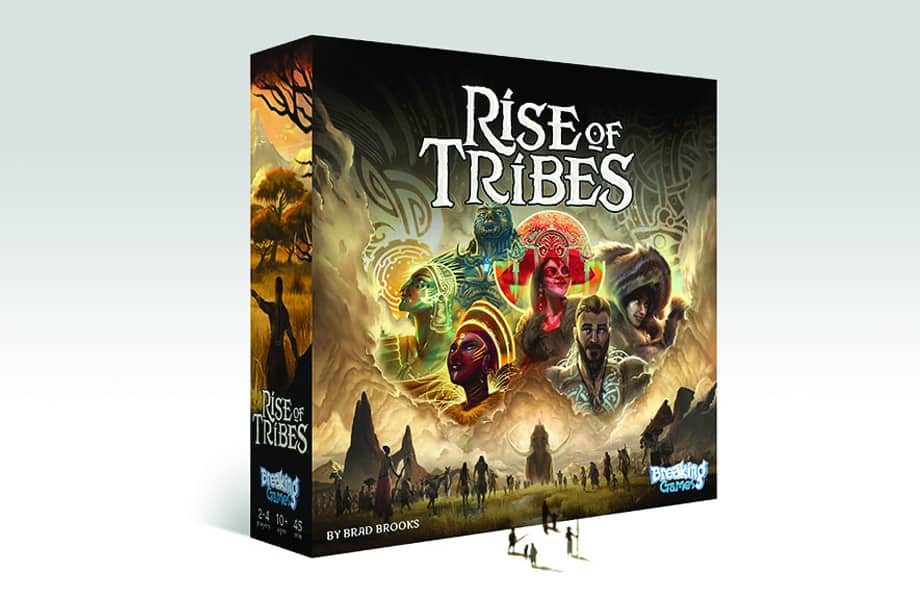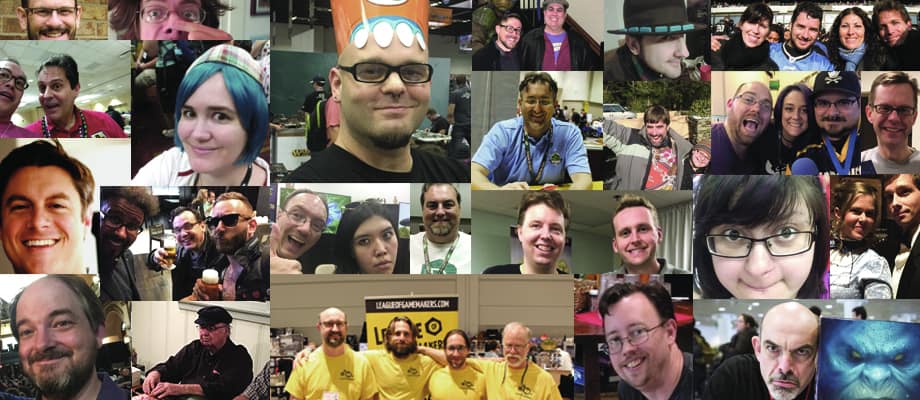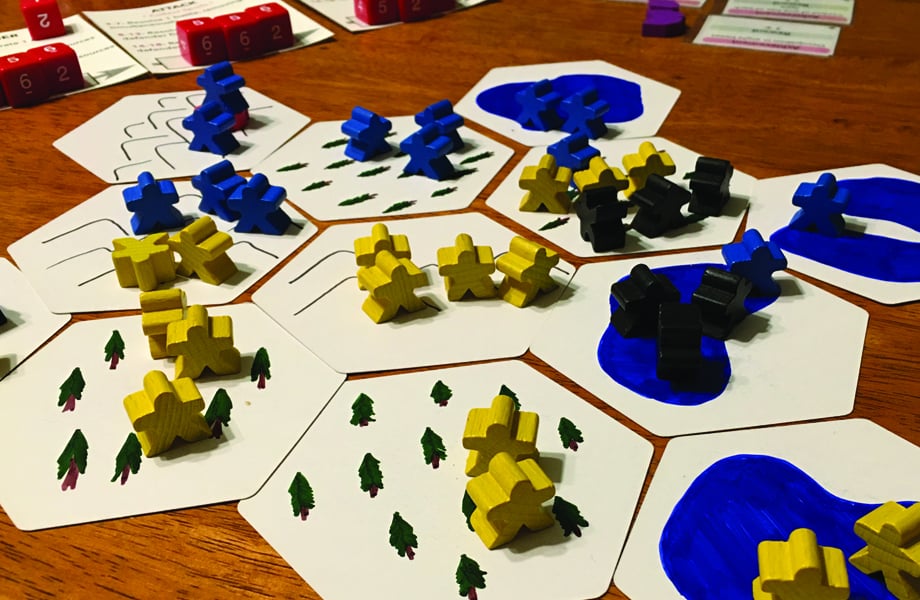
A little over a year ago I had an idea for an action selection mechanic using a queue of dice and designed a prehistoric civilization game around it, Rise of Tribes. I played the game with a couple of designer friends and they liked it. Even better, they wanted to play it again. Bingo! – a working game that people like and want to play. Throw some art on it and wait for the Spiel Des Jahres nomination.

Except when I playtested it with a wider audience some issues started to appear. Over the next year I made a number of tweaks to the design, gradually moving down the path towards a consistently better game. Let’s take a look at some of the stops along that path.

In the first version of Rise of Tribes players took THREE actions on their turn based on dice they rolled. I didn’t have any specific reason for picking three other than that it felt like a good number and when I played it worked so it must be right. When playtesting with a wider group I noticed some players talking a long time to take their turns and other players losing focus in the game because of the time between their turns.
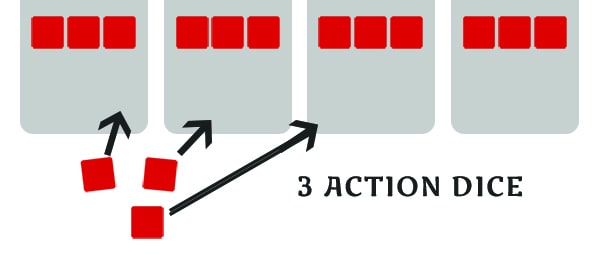
Also, games would often accelerate to an ending too quickly and players sometimes felt robbed of their opportunity to play. My initial reaction was to see these as separate issues with different solutions. I tried to simplify the dice from pips to numbers (which players needed to add) and redesigned the actions to make them easier to parse in an effort to reduce turn length. To keep players interested between their turns I looked at increasing aggression in the game (pay attention or Jane will attack you!) and finding other interactions I could force into the design.
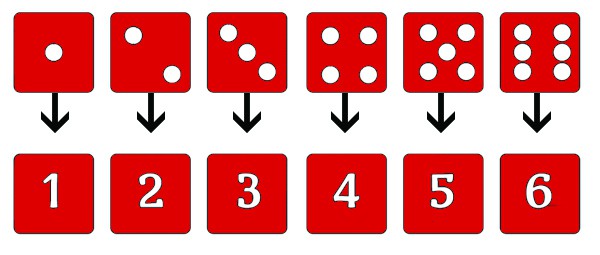
While a few of these tweaks were kept as the design moved forward they didn’t really solve the issue.
At one point one of the players suggested only taking TWO actions per turn. I laughed it off. “It has to be three actions because, well, three is…uh…more than two, and…uh…” Once I realized I had no good reason for holding onto three we tried it with two actions per turn. It was immediately apparent that this was better. Turns moved much faster. Planning and executing three actions is a much bigger cognitive load than just two. With less actions taken the game state changed less between players turns and gave players more opportunity to react to each other. It also meant players needed to think a bit more strategically since they might need multiple turns to achieve their goals rather than just maximizing what they could achieve in a three action burst.

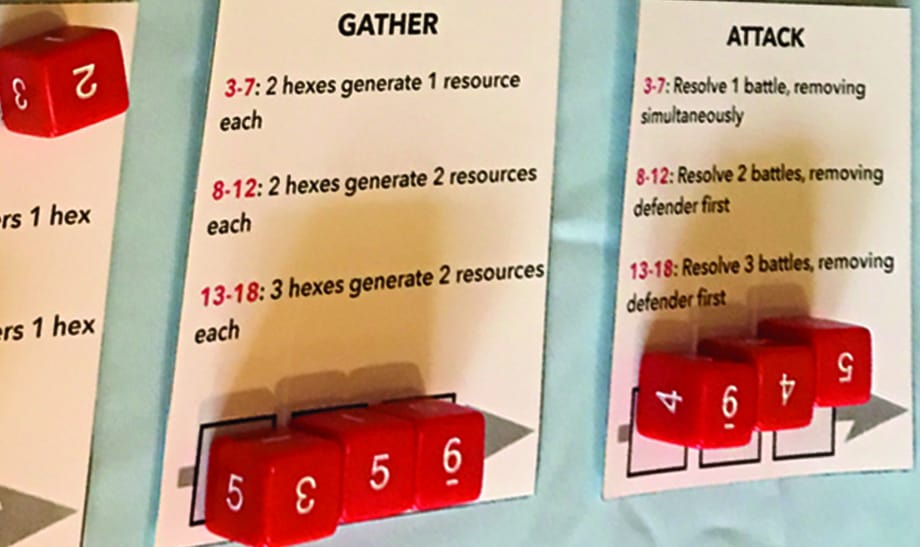
The change to two actions also brought to light another issue with the design – the ATTACK action. When players only had two actions they were much less likely to use the attack action, emphasizing its limited usefulness. In Rise of Tribes you generally attack another player because they are standing in the way of one your goals, or because you need to slow them down and many players could go through an entire game without attacking. So attack just didn’t feel equivalent to the other bread and butter actions (Grow, Move, Lead and Gather) and we felt we needed a different mechanic for it. We experimented with different ways to trigger the action but none of them really addressed the issue that a player didn’t value attacking enough to spend an action on it.
The answer came to me a day or two later in the shower (where most good ideas come from). Issues in game design usually become apparent during playtesting. Typically at the time these occur the only solutions I can come up with involve burning the prototype in very hot flames, finding new playtesters or switching to another hobby like chainsaw juggling. My investment of effort and emotions in the current design make it hard to see around the problem. Distance and a different perspective allow me to make the leap to a solution that I couldn’t have seen in the heat of the moment.
Okay, back to the attack issue. I took the attack action away and instead added a per hex population limit of five tribe members. Players could share the hex as long as the total number of tribe members was 5 or less. If at the end of a turn there were six or more tribe members conflict was triggered and units of each player were removed until there was only one tribe left. This new system meant conflict happened as a natural consequence of growing or moving. It forced players to spread out more since the population limit applied even if there was only one tribe present. It made players pay more attention to their opponents moves, since the friendly guy sharing your hex this turn could become a hostile horde on the next. This was a huge improvement.

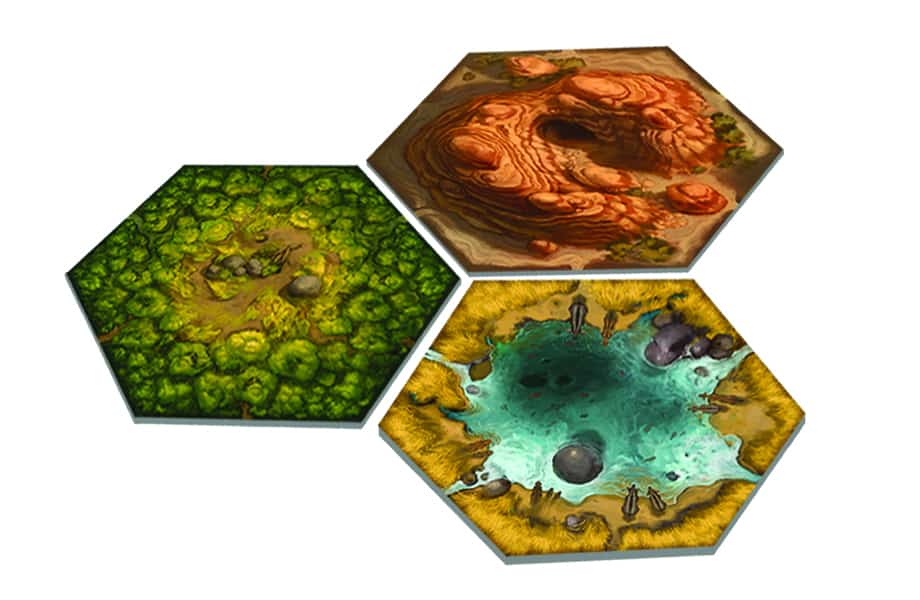
The board for Rise of Tribes is a random arrangement of three hex types: forest, mountain and lake. It is advantageous to the player to have access to each of them so that they can gather resources from each. In the initial versions of the game there were pre-defined starting positions for each player, spread as far apart as possible. Often, a player would feel disadvantaged because they started with little access to one of the hex types. For those who did start with what they needed the temptation was to turtle and not venture out. We looked at various methods of reducing the randomness of the board to ensure an equal distribution of hex types while still having it vary from game to game – not really possible. Instead, we got rid of the start positions and just let each player choose where to start, introducing sort of a turn zero before the regular turns. This both eliminated the issue of unequal starting positions and generally started players closer together on the board, which increased interaction and player interest.
There have been other tweaks along the way as well, the end result of which (hopefully) is a better playing game. It’s amazing how much more work there is to do to your perfect design once it meets the scourge of game design: players. And many times that work can be demoralizing in the moment; frustration that your game isn’t being played the way you expected or exasperation that the fix you put in for the issue that players kept finding now makes something else broken. It’s never going to be perfect, and it’s only done when you stop. Hopefully you’ve pushed it down the path to a better game and you’re satisfied with where you end up. For Rise of Tribes I am.
